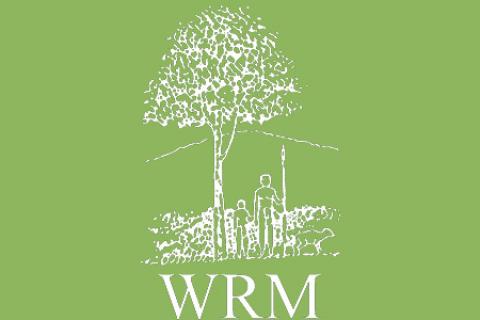Between 70 and 80% of Nigeria's original forests have disappeared and nowadays the area of its territory occupied by forests is reduced to 12%, even if the entire country is located in the humid tropics. All of the country's remaining primary rainforest watersheds, covering about 7,000 km2, are located in Cross River state. This region also contains 1,000 km2 of mangrove and swamp forest, being oil exploitation an important cause of their degradation and destruction (see WRM Bulletin 22).
Bulletin articles
What is a woodlot? Is it a patch of land planted to trees for the purpose of supplying the fuel and timber needs of a rural community? Or is it a small portion of a giant industrial plantation, meeting the pulp and paper needs of first world industrial society?
An exact answer to these questions would help to erase the uncertainty that exists in my mind. However, clear answers have not been forthcoming, and over the past twenty years, whilst living in Zululand, I have come to these conclusions.
Tanzania's forests are quickly disappearing and illegal commercial logging is the main cause of the problem. Not only does the government seem unable to address the present state of things, but forestry officials themselves have been accused of being directly involved in the illegal timber trade. Other suspects in the illegal timber business are timber product dealers, private individuals, sawmillers and logging companies (see WRM Bulletin 27).
By different means the World Bank is one of the major and most influential promoters of the prevailing monoculture tree plantation model. The International Finance Corporation (IFC) -a part of the World Bank Group, whose specific task is the promotion of private sector investment in "poor" countries- has been directly investing in projects linked to tree plantations, for example in Kenya and Brazil.
Intentional fires, tree monoculture plantations and mining are direct causes of deforestation in Indonesia. Additionally, indigenous peoples traditional rights over their territories are ignored. As a result, the country's once vast and luxurious forests are vanishing and, according to two recent independent studies, deforestation rate is faster than what the authorities are used to admitting. A World Bank research, based on map studies, and issued last July estimates an annual forest loss of 1.5 million hectares during the last two decades.
Several NGOs -among them the Borneo Resources Institute (BRIMAS), Sahabat Alam Malaysia (Friends of the Earth), SACCESS, Keruan Association Sarawak, Centre for Orang Asli Concerned (COAC) and EPSM/CETDEM- took part at the first consultative meeting of the Malaysian National Timber Certification Council (NTCC) which took place from 18-21 October, 1999, in Kuala Lumpur.
For years the Bakun Dam Project has aroused great concern among environmental and social NGOs and indigenous peoples' organizations in Sarawak and worldwide, which have opposed this megaproject since it is detrimental to Sarawak's remaining primary forests that lie in the catchment area and to the indigenous people that inhabit them (see WRM Bulletins 2, 9 and 24).
Only 3% of the dense rainforests that once existed in The Philippines is still standing and less than 1% of the former forest is still in a pristine state (see WRM Bulletin 27). The Province of Aurora, which comprises a strip of land between the Sierra Madre mountains and the Pacific Ocean, is an exception, because unlike most of the country, it still maintains over 50% of its original forest cover, even some as primary forests. Along the coastline there are 430 hectares of mangroves.
Forests are trees. Forests are biodiversity. Forests are wildlife. Forests are lands. Moreover, forests are politics. Development is clearing of forests. Conservation means more and more consultancies. Protection means a wider and wider gap between the forest and the communities. Regarding the forest issue, the context in Sri Lanka is not much different from this reality.
In the Region Huetar Norte of Costa Rica, the forest area has been reduced to the lowlands of the San Juan River on the border with Nicaragua. What used to be a vast tropical forest that occupied more than 200,000 hectares has been reduced to a mere 30,000 hectares of fragmented forests, most of which severely logged. Unlike what happens in other regions of the country, in Huetar Norte there are no protected areas, all the remaining forests are categorized as wood production forests, and the region's biodiversity is in the hands of forestry management plans.
Bolivian social organizations, trade unions, IPOs and environmental NGOs have strongly condemned and taken actions to face a recent governmental decree, which in fact guarantees the activities of illegal logging performed by depredatory companies to the detriment of the country's forests and their people.
Nearly fifty years after their traditional lands were taken over and much of their population decimated by military forces, the Pataxó indigenous people decided to recover them and took over Monte Pascoal National Park last August (see WRM Bulletin 28).
